2023 October 4
Deep Sky Update – September 2023
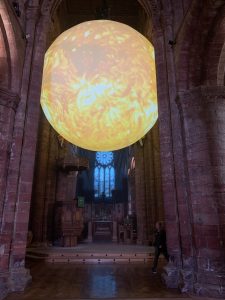
Now past the autumnal equinox we are really seeing the return of properly dark skies. It’s just a pity the weather was not a bit better. We had a really nice display of the aurora borealis here in Orkney on September 12-13, and there was another a few days later but we were away, and I’m not sure it was very clear in Orkney for that one. Early September was busy with the Orkney International Science Festival. I was not able to attend many of the talks, but the SUN display in Kirkwall’s St. Magnus Cathedral was magnificent. We did a live stream “Orkney Sky at Night” with Eric Walker and Catherine Young, which was great fun. I also did a couple of workshops; “Observing the Sun” was rather poorly attended but my “Becoming an Amateur Astronomer” was a sell out! I am hoping to get some clear nights in October for deep sky work – but we will have to wait and see.
I expect many will be heading to Kelling Heath for the autumn star camp starting on the 9th with the main event day being the 14th. A bit later in the season due to the campsites’ commitment to other events, I understand. I hope there is good weather and observing there – and it’s not too cold and windy for those camping in tents! It would be nice to hear any reports of the camp and I can relay these on in the October update.
Deep Sky Zoom
The Deep Sky Zoom webinar on 28th September has been well received. Many thanks to Owen, David and Grant for preparing and delivering their talks. And also many thanks to Andy Wilson for all the IT/tech support. Live I think the audience peaked at around 50, but the YouTube views have now climbed to 266! (of course this number does not reflect individual views of the whole meeting).
If you want to watch the meeting, you can find it at: https://www.youtube.com/live/00tM647A9SU?si=CiMWIliWe7WiN5YQ
I have been asked if we could have more of these so I have been thinking about organising a mid-winter webinar in January – if anyone would like to give a short talk then, please let me know.
Observing Style Survey
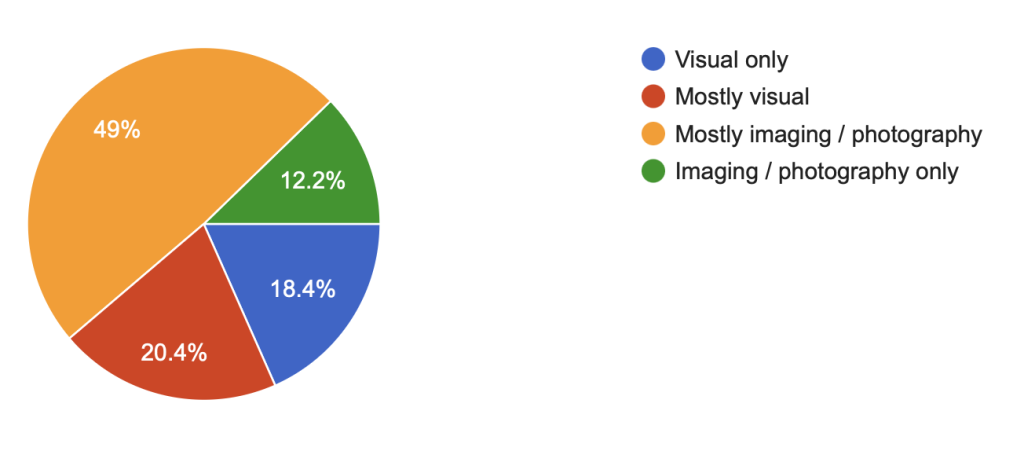 This pie-chart shows the results of the survey I posted last month. There were 49 submissions, and roughly (combining the only and mainly categories) 60% of responders image and 40% observe visually (61.2% to 38.8%). This seems to show that there is still a healthy number of people observing visually, but the majority are imaging. I deliberately chose not to provide a 50:50 option in the survey, to try and elicit a decision one way or another.
This pie-chart shows the results of the survey I posted last month. There were 49 submissions, and roughly (combining the only and mainly categories) 60% of responders image and 40% observe visually (61.2% to 38.8%). This seems to show that there is still a healthy number of people observing visually, but the majority are imaging. I deliberately chose not to provide a 50:50 option in the survey, to try and elicit a decision one way or another.
And many thanks to all who provided comments too – these are very interesting. There does seem to be an interest in Electronically Assisted Astronomy (EAA) where this is combating light pollution and ageing eyes, and some switch to astro-imaging for the same reason. I appreciate a number are now using eVScope types of equipment and it was a little unclear how this is categorised, though I tend to include these as EAA too. I suppose intrinsically EAA is imaging, but the style of observation is very much similar to visual experiencing the night sky in real-time. Long exposure astro-imaging will continue to be popular both for fine astro-photographs and scientific observation. Some comments relate to the lack of sketches or visual reports – I would have to agree that I receive few of these. All I can really do is appeal to visual observers to send in reports and sketches. The more that do, the more encouragement this will give to others.
Hinds Nebula Brightening?
Grant Privett reported in September that Hind’s Variable Nebula (NGC 1555) had appeared to have changed or brightened. Unfortunately his imaging computer with his observation died. It would certainly be worth following up on this target and the other VNe that are returning to our autumn skies.
OOI for September
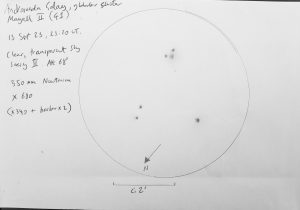
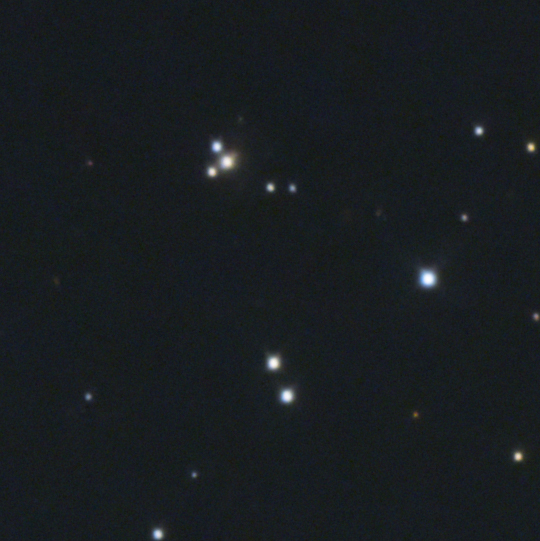
I’m not sure if it was too hard or the weather too bad but I had only two successful observations of Mayall II (M31 G1). This image by David Davies and a visual observation by Jim Latham:
“ I’ve seen G1 previously and it was good to return to it. I had a short window of very transparent skies and good seeing on 13th September, before the rain-clouds rolled back in. It took magnification very well in the 14″ and I had fine views at x680 (X340 with barlow). G1 appeared as an obvious fuzzy ball with a condensed centre, in that distinctive tight triangle with two stars. I’ll attach a rough sketch from my notebook. I was inspired to track down some other globulars in M31 afterwards.”
Of course all other globular clusters around other galaxies just look like point stars, but Mayall II does really look like a fuzzy ball of stars. It must be amazing to be inside M31 and be able to view it close up.
OOI for October
Although there are a few images of October’s target in the archive, I think it is also still rather under-observed, and is a good target for the visual observer with modest equipment too. October’s target is the planetary nebula M76, the Little Dumbbell, in Perseus. Itr is one of the faintest objects in Messier’s catalogue (mag 10.1), and fairly small at 2.7×1.8 arc min. The size makes it a little tricky for imaging requiring a high image scale. It is a strong emitter in OIII so those filters should enhance it substantially. Visual reports and sketches will be very welcome.
Picture of the Month
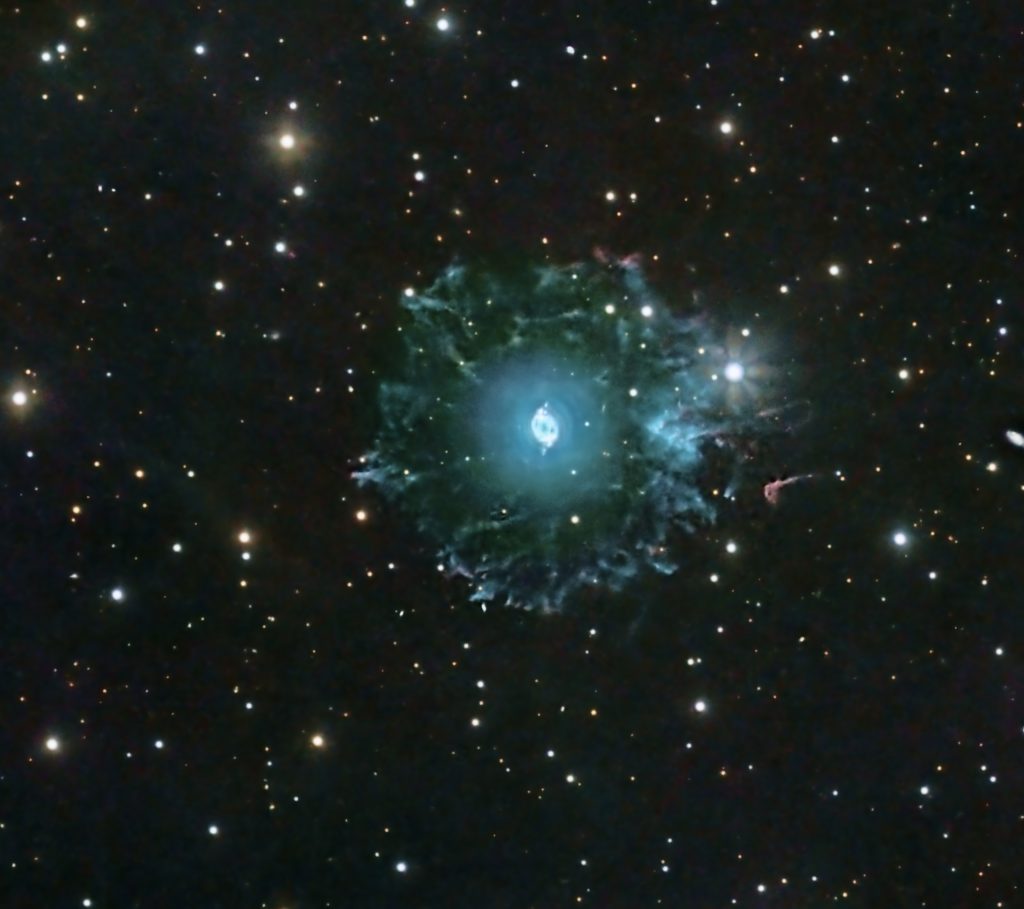
This month I’ve chosen the Cat’s Eye nebula in Draco by Kevin Gurney. A shot that shows so much detail in the structure of the nebula – just lovely.
And Finally
Good luck with your observing in October – keep looking up!
Callum
https://britastro.org/wp-content/uploads/2023/10/IMG_2317-scaled.jpeg
| The British Astronomical Association supports amateur astronomers around the UK and the rest of the world. Find out more about the BAA or join us. |
